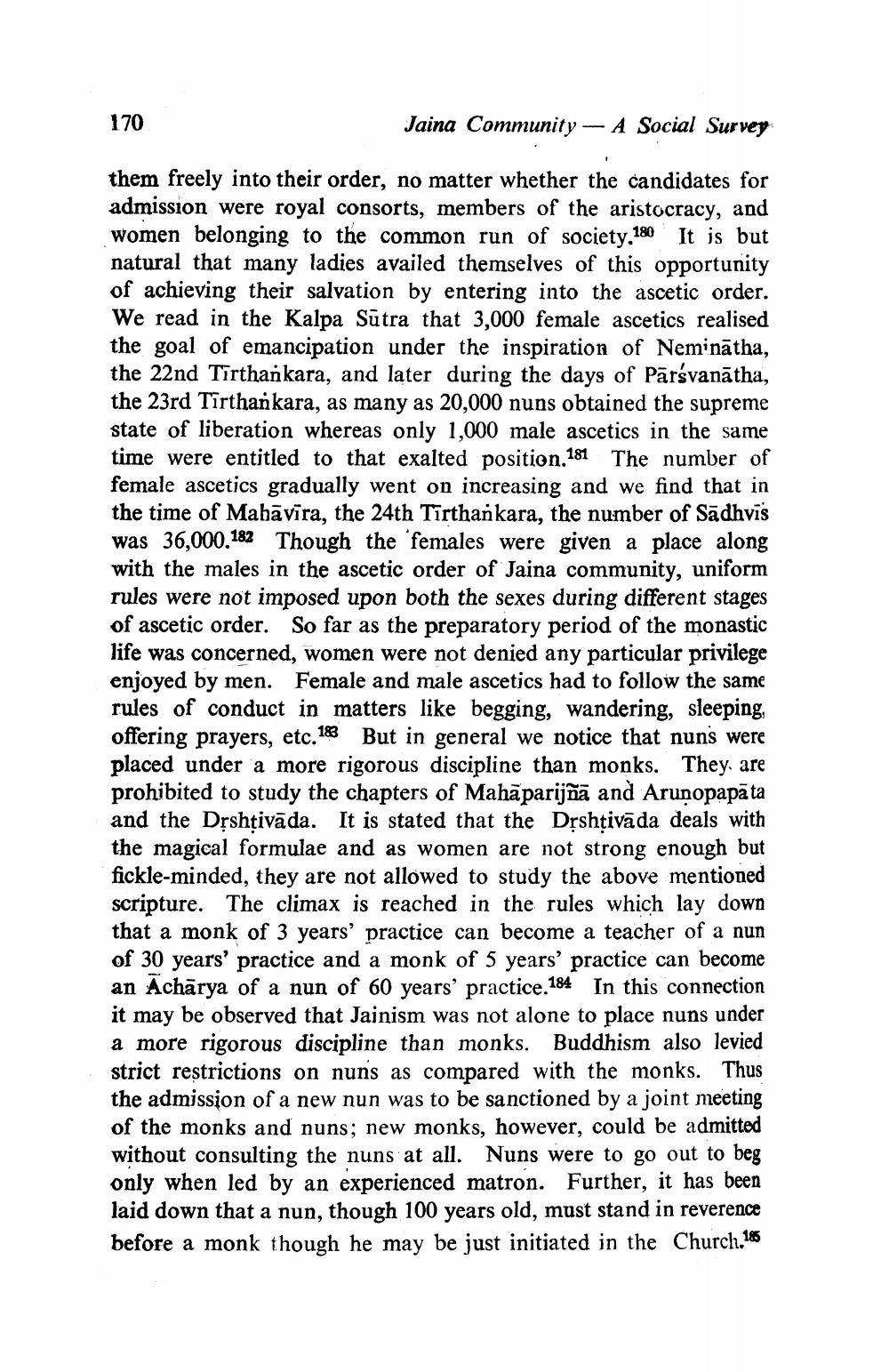________________
170
Jaina Community — A Social Survey
them freely into their order, no matter whether the candidates for admission were royal consorts, members of the aristocracy, and women belonging to the common run of society.180 It is but natural that many ladies availed themselves of this opportunity of achieving their salvation by entering into the ascetic order We read in the Kalpa Sūtra that 3.000 female ascetics realised the goal of emancipation under the inspiration of Neminātha. the 22nd Tirthankara, and later during the days of Pārsvanātha, the 23rd Tirthankara, as many as 20,000 nuns obtained the supreme state of liberation whereas only 1,000 male ascetics in the same time were entitled to that exalted position.181 The number of female ascetics gradually went on increasing and we find that in the time of Mahāvīra, the 24th Tīrthankara, the number of Sadhvis was 36,000.182 Though the 'females were given a place along with the males in the ascetic order of Jaina community, uniform rules were not imposed upon both the sexes during different stages of ascetic order. So far as the preparatory period of the monastic life was concerned, women were not denied any particular privilege enjoyed by men. Female and male ascetics had to follow the same rules of conduct in matters like begging, wandering, sleeping, offering prayers, etc.18 But in general we notice that nuns were placed under a more rigorous discipline than monks. They are prohibited to study the chapters of Mahāparijñā and Arunopapā ta and the Dșshțivāda. It is stated that the Dșshțivāda deals with the magical formulae and as women are not strong enough but fickle-minded, they are not allowed to study the above mentioned scripture. The climax is reached in the rules which lay down that a monk of 3 years' practice can become a teacher of a nun of 30 years' practice and a monk of 5 years' practice can become an Achārya of a nun of 60 years' practice.184 In this connection it may be observed that Jainism was not alone to place nuns under a more rigorous discipline than monks. Buddhism also levied strict restrictions on nuns as compared with the monks. Thus the admission of a new nun was to be sanctioned by a joint meeting of the monks and nuns; new monks, however, could be admitted without consulting the nuns at all. Nuns were to go out to beg only when led by an experienced matron. Further, it has been laid down that a nun, though 100 years old, must stand in reverence before a monk though he may be just initiated in the Church.185




